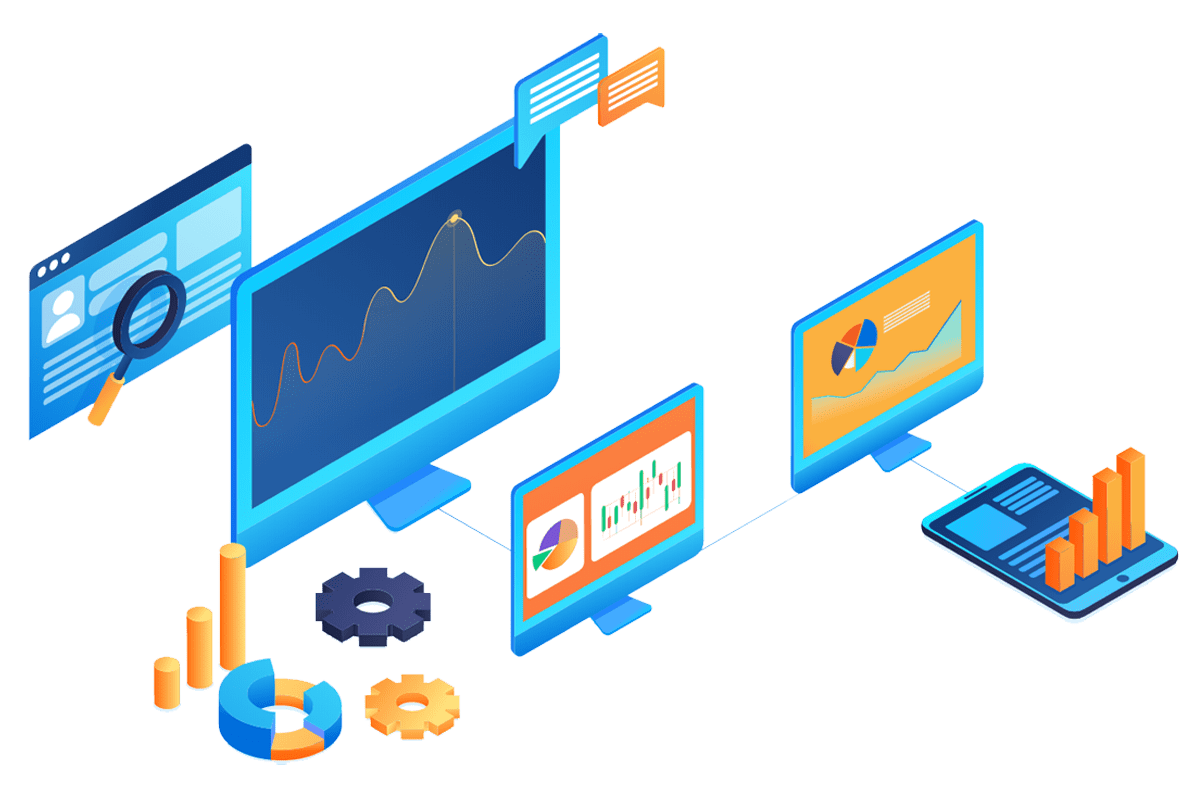
Key Features of Forex Back Office Software – How Do You Choose The Best One?
Forex back office software is like the control center for Forex trading businesses. It helps manage everything from customer information to money transactions. In this article, we will talk about the key features of Forex back office software and how to choose the best one. These features are key to running a Forex business smoothly. They help keep track of all trading activities, make sure the business follows financial rules, and manage reports and finances effectively. Understanding these features is really important for anyone running a Forex trading business, as they help make the business more efficient and keep customers happy.
What is Forex Back Office Software?
Forex back office software is a specialized tool used by Forex trading businesses to manage the internal operations that are essential for running the brokerage but are not directly involved in the trading process and are not typically seen by clients. This includes tasks like managing the forex white label cost, which is a key aspect of operational budgeting. The software acts as the operational backbone of a Forex brokerage, managing a variety of crucial administrative and technical tasks behind the scenes.
The admin area is where the brokerage’s staff can oversee and manage client accounts, monitor transactions, and ensure compliance with financial regulations. It’s the control center for managing the critical operational aspects of the business, from client onboarding to transaction processing and financial reporting.
These back office solutions have evolved significantly with the advent of cloud-based Software as a Service (SaaS) models. Many CRM providers now include back office functions in their offerings, providing a more integrated and efficient approach to managing brokerage operations. This evolution has made Forex back office software an attractive alternative to Business Process Outsourcing (BPO), where back office tasks are handed over to a third-party service provider.
Benefits of Using FX Back Office Systems
Using FX back office systems brings several significant benefits to Forex brokerages:
Efficient Client Management: These systems allow for streamlined management of client accounts, including onboarding, verification, and maintenance of client data, ensuring that brokers can provide prompt and effective service.
Compliance and Regulatory Adherence: With stringent regulations in the Forex market, back office systems help brokerages stay compliant by automating and managing necessary regulatory processes, such as KYC (Know Your Customer) and AML (Anti-Money Laundering) checks.
Improved Financial Reporting: Back office software offers powerful reporting tools, enabling brokerages to generate detailed financial reports easily.
Operational Efficiency: By automating routine administrative tasks, these systems reduce the manual workload, allowing staff to focus on core business activities and client engagement, thereby enhancing overall productivity.
Risk Management: FX back office systems provide tools for effective risk management, including monitoring client activities and transactions, which is vital for maintaining the financial stability of the brokerage.
Key Features of Forex Back Office Software
Detailed Reporting Functionality
The detailed reporting functionality of Forex back office software enables the creation of detailed, customizable reports covering a wide range of data, from trading activities and client transaction histories to overall financial performance and profitability analysis. Brokers can gain a deeper understanding of market trends, identify trading patterns, and assess client behaviors. It allows them to track the effectiveness of their strategies, monitor the success of marketing efforts, and make informed decisions about future business directions.
Moreover, these reports can highlight areas of strength and pinpoint opportunities for improvement, aiding in the development of targeted strategies for client retention, market expansion, and revenue growth.
KYC Compliance Features
These features are designed to rigorously verify and authenticate client identities, an essential process in adhering to anti-money laundering (AML) regulations and mitigating the risk of financial fraud. The KYC tools within the software typically include document verification, where clients are required to submit official identification documents, which the system then verifies for authenticity.
The software is also capable of conducting background checks and screening against global watchlists to ensure clients are not involved in any illicit activities. By automating these processes, the software not only streamlines client onboarding but also maintains continuous monitoring of client activities, flagging any suspicious transactions.
User Access Management
This feature empowers administrators to meticulously control and oversee who has access to specific areas of the system, thereby preventing unauthorized access and potential data breaches. Administrators can assign varying levels of access to different users based on their roles and responsibilities within the organization. This hierarchical access system ensures that each user only sees the information necessary for their job function, thereby enhancing data security.
Additionally, user access management allows for the tracking and auditing of user activities within the system, providing an extra layer of security by enabling administrators to monitor for any unusual or unauthorized actions.
Financial Transaction Management
This feature encompasses a comprehensive set of tools that are designed to handle all aspects of financial transactions with efficiency and accuracy. The software facilitates the processing of client deposits and withdrawals, ensuring these transactions are executed swiftly and securely. It also manages internal fund transfers between accounts, aiding in the fluidity of financial operations.
Another key function is financial reconciliation, where the software systematically compares financial records against actual transactions to ensure accuracy and consistency in financial reporting. This not only helps in identifying and resolving any discrepancies but also aids in maintaining compliance with financial regulations.
Marketing and Outreach Tools
These tools enable the creation and management of targeted email campaigns, allowing brokers to communicate promotions, updates, and educational content directly to their client base. This direct line of communication is vital for building relationships and keeping clients informed.
Additionally, the software often features tools for designing and implementing promotional activities, such as referral programs or special trading offers, which can be key in attracting new clients. These tools also assist in analyzing client behaviors and preferences, enabling brokers to tailor their marketing strategies more effectively.
Trading Platform Compatibility
Compatibility with trading platforms like MT4 and MT5 is a key feature. This ensures seamless integration between the trading platform and back office operations, allowing for efficient management of client accounts and trading activities.This seamless connection ensures that all the trading information is accurately reflected in both the trading platform and the back office system. It allows for real-time tracking of trades, quick execution of client orders, and efficient management of risk and exposure.
Partnership and IB Management
Managing partnerships and Introducing Brokers (IBs) is made easier with dedicated features in back office software. These tools help calculate and disburse commissions, manage partner accounts, and provide reporting functionalities, fostering strong and productive partnerships.
Real-Time Trading Monitoring
This feature offers a live view of client positions, including current trades, open orders, and pending transactions. It allows brokers to monitor margin levels, ensuring that clients have sufficient funds in their accounts to cover their positions and reducing the risk of significant losses. Additionally, real-time monitoring is instrumental in identifying potential risks, such as unusual trading patterns or excessively leveraged positions.
How Do You Choose The Best One?
Conduct Comprehensive Market Research: Start by thoroughly researching the market to understand the available options. Use your professional network for recommendations and insights into different platforms’ functionalities, strengths, and limitations. This initial research will help in shortlisting the solutions that best fit your business needs.
Set a Realistic Budget: Determine a budget that aligns with your company’s financial strategy. Consider all potential costs involved, including licensing, necessary hardware, and staffing requirements. Ensure that your investment in technology doesn’t overextend your financial resources.
Assess Technology Offerings and Security Features: Carefully review the technical capabilities of each software option. Look for features that match your daily operational needs and assess the platform’s performance. Security is paramount, especially since the software will handle sensitive personal and financial data. Evaluate the security measures each platform offers to protect this critical information.
Experience the Software First-Hand: Before making a final decision, it’s important to see the software in action. Request demos or trial periods from vendors to test the software in your company’s IT environment. Pay attention to how well it integrates with your existing systems and whether it meets your operational requirements.
By following these steps, you can choose a Forex back office software that not only suits your current operational needs but also supports the future growth and success of your business. The right software will streamline your operations, enhance security, and contribute to the overall efficiency and profitability of your Forex brokerage.
In conclusion, the key features of Forex back office software are designed to enhance operational efficiency, ensure regulatory compliance, manage financial transactions, and support marketing and partnership programs. These features collectively help Forex brokerages to manage their operations effectively and provide superior service to their clients.







